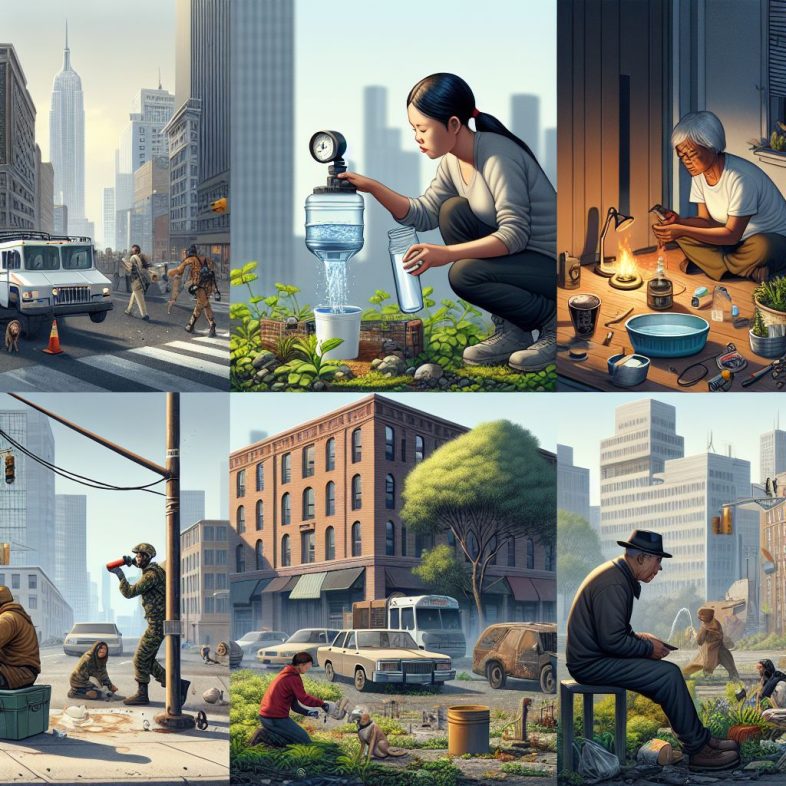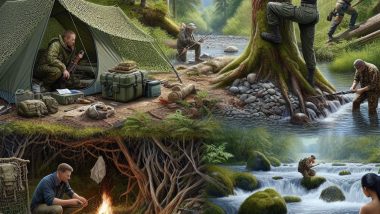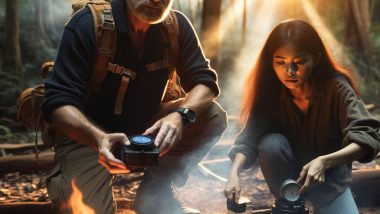Summary
-
Master the basics of urban survival, including self-defense, navigation, and shelter.
-
Learn to recognize and collect food and water in an urban setting.
-
Understand the necessary gear to include in your urban survival kit.
-
Plan for typical urban emergencies with a custom plan and awareness.
-
Stay up-to-date with reliable sources and training for urban survival scenarios.
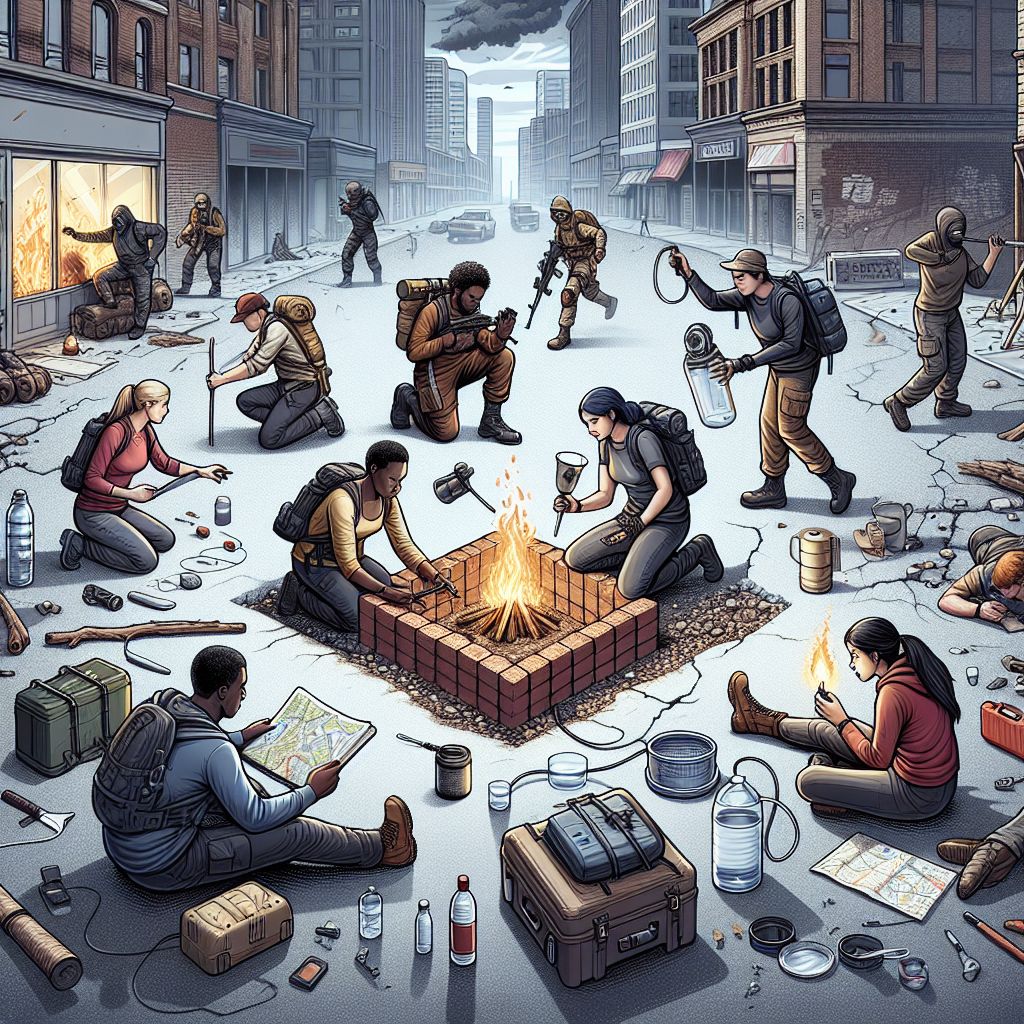
How to Master Urban Survival Skills
When we consider survival, we often picture dense woods or uninhabited islands. But what if you ended up in a survival scenario in the middle of the city? Urban settings pose unique challenges, and mastering urban survival skills can mean the difference between flourishing and merely surviving. Let’s explore the skills and tips you need to confidently navigate the urban jungle.
Essential Skills for City Inhabitants
Whether you’re facing a power outage, a natural disaster, or simply getting lost in a new part of town, having a few critical skills under your belt can help you handle the situation with ease. The key to urban survival is to stay calm and make the most of your surroundings. Cities are intricate places, so it’s vital to know how to navigate, locate resources, and stay safe.
Essential Equipment for Urban Readiness
Before you can feel fully ready to face the challenges of urban survival, you’ll need to equip yourself. But this isn’t about stockpiling every gadget you can find – it’s about selecting the right tools that will serve multiple purposes without being a burden. Consider items that are small, sturdy, and versatile. For example, a multi-tool can be a godsend in a variety of situations, from repairing a broken zipper to slicing through obstructions.
Self-Protection: The Key to City Safety
Self-protection is a key aspect of city survival. It’s not just about knowing how to hit someone; it’s about being aware, avoiding danger, and understanding the legal consequences of self-protection. In the city, threats can come from anywhere, and often the best defense is a good plan to avoid dangerous situations in the first place.
Simple Self-Protection Moves
No matter your size or strength, it’s important to know some fundamental self-defense moves. Palm strikes, elbow jabs, and knee kicks can be highly effective when done correctly. Practice these moves until they’re ingrained in your muscle memory, so if you ever have to use them, you’ll act without thinking.
But self-defense isn’t just about fighting. It’s also crucial to be aware of your surroundings and to trust your gut. If something doesn’t feel right, it probably isn’t. Learn to spot the signs of danger and know how to quickly get yourself out of a potentially dangerous situation.
Pepper Spray and Personal Alarms
Pepper spray is an excellent self-defense tool that can cause temporary blindness and breathing difficulties in an attacker, giving you time to get away. Personal alarms, meanwhile, make a loud noise that can confuse an attacker and draw attention. Here are some pointers on how to use these tools:
-
Always have them handy, such as on a keychain or in a front pocket.
-
Know how to use them – practice in a safe setting.
-
Check the legal rules in your area before carrying pepper spray.
Keep in mind, these tools are only as effective as your ability to use them. So, spend some time getting to know how they work and what they can and can’t do.
Finding Your Way: Urban Navigation
It’s easy to lose your bearings in a city, and in certain situations, it can even be risky. Knowing how to navigate is a key skill for surviving in a city. Plus, there’s usually some method to the madness of a city’s layout. Once you figure out the pattern, getting around becomes a lot simpler.
Getting to Know Urban Structures
Most cities are organized in a grid system, with streets going from north to south and east to west. Main roads and landmarks can be used as orientation points. Pay attention to the patterns in street names and numbers – they can help you figure out where you are and where you need to go.
-
Know how to recognize essential landmarks that can help guide you.
-
Get to know the public transit system and always have a map with you.
-
Keep in mind that most cities are built with a specific design in mind.
And if you’re ever in doubt, don’t be afraid to ask for help. Locals can give you information that you might not find on maps or apps.
Technology and Traditional Maps
Technology is a great tool for navigating the urban jungle, but don’t rely on it entirely. Smartphone maps and GPS are great, but batteries die and signals can be unreliable. It’s a good idea to also carry a traditional paper map as a backup. Here’s how to use both to your advantage:
-
Utilize your cell phone for immediate traffic and public transit updates.
-
Keep a small, collapsible city map on hand for when technology lets you down.
-
Become proficient in map reading – know what symbols mean, how to use scale, and how to orient yourself.
When you blend technological know-how with time-honored skills, you’ll have no problem getting around any city.
Finding Drinkable water in the City
Getting your hands on clean water to drink can be a big issue in a city survival situation. There are plenty of water fountains and public bathrooms in cities, but they might not work if there’s an emergency. Here’s what you can do: consider using a portable water purifier as a compact hydration solution.
-
Scout out local businesses like coffee shops or fitness centers that could supply water.
-
Gather rainwater in any clean vessels you own, but make sure to clean it before you drink it.
-
Be aware of where the closest rivers or lakes are and have ways to clean the water, like tablets or filters, on hand.
Don’t forget, it’s vital to stay hydrated to survive, so make locating a water source your top priority in an emergency situation.

Securing Shelter and Safety in the City
-
Look for public buildings like schools, libraries, or community centers for temporary shelter.
-
Mass transit vehicles like buses or trains can be used as temporary shelters if they are not running.
-
Secure and discreet areas like parking garages or underpasses can be used, but always be aware of potential dangers.
Securing a safe place to stay can be as important as finding food and water in urban survival. The key is to find places that offer protection from the weather and have emergency exits.
The most crucial tip is to keep a low profile and not attract attention to yourself or your shelter. Adopt a “gray man” approach and blend into your environment to avoid possible dangers.
Always keep in mind that there is strength in numbers. If you can, join forces with others to form a support network and share resources.
Options for Temporary Shelter
When you’re forced to stay outdoors, you might want to think about these temporary shelter options:
-
Make use of tarps or trash bags to construct temporary tents or windbreaks.
-
Search for natural shelters such as overhangs or indented doorways for some level of protection.
-
Have a lightweight, small emergency bivy or sleeping bag with you for warmth in the colder seasons.
Even though these solutions are not perfect, they can provide protection in a crunch.
Turning Your Home into a Safe Place
When it comes to surviving in the city, your home can be your castle. Here’s how to strengthen your home:
-
Keep a supply of necessities such as food, water, and first aid items on hand.
-
Make sure your doors and windows have strong locks, and think about adding extra security features such as bars or security film.
-
Put together a plan for a fast escape, including a go-bag and a prearranged meeting spot for your family.
If you prepare ahead of time, you can turn your home into a safe headquarters during a disaster.
Emergency Communication and Signaling
If normal communication channels are unavailable, it’s crucial to have other ways to call for assistance or communicate with others. That’s why it’s so important to have an emergency communication plan in place.
One practical strategy is to create a contact network before disaster strikes. This network should involve local friends and family, as well as contacts outside your immediate area who may not be impacted by the same event.
Contemporary Tools for Urban Communication
In the current era of technology, there are a number of contemporary tools that can be crucial in a crisis:
-
Even without cell service, smartphones can connect to Wi-Fi for communication apps and emergency alerts.
-
Keep your devices powered when the electricity is out with portable chargers and solar chargers.
-
Two-way radios are a reliable means of communication over short distances without the need for cell towers.
Keep these devices charged and ready to go, so you can stay connected when it matters most.
Additionally, consider using apps and services that provide offline map access and location sharing. These tools can be life-saving if you need to find your way without internet access or if you need to signal your location to rescuers.
It is crucial to get to know how these devices work before you find yourself in an emergency situation. Being able to use them properly could save valuable time.
“Those who are ready see the city not as a concrete jungle but as a huge resource filled with opportunities and help.”
Traditional Signaling Methods
If technology fails, traditional signaling methods can still come in handy. Here are a few traditional signaling methods to consider:
-
Blow a whistle to call for help. The universally recognized distress signal is three quick blasts.
-
Use brightly colored clothing or reflective objects to create visible signals that can be seen from far away.
-
Fire can also be used as a signal, but only if it is safe and prudent to do so.
These techniques have been around for a long time and are still an important part of any urban survival plan.
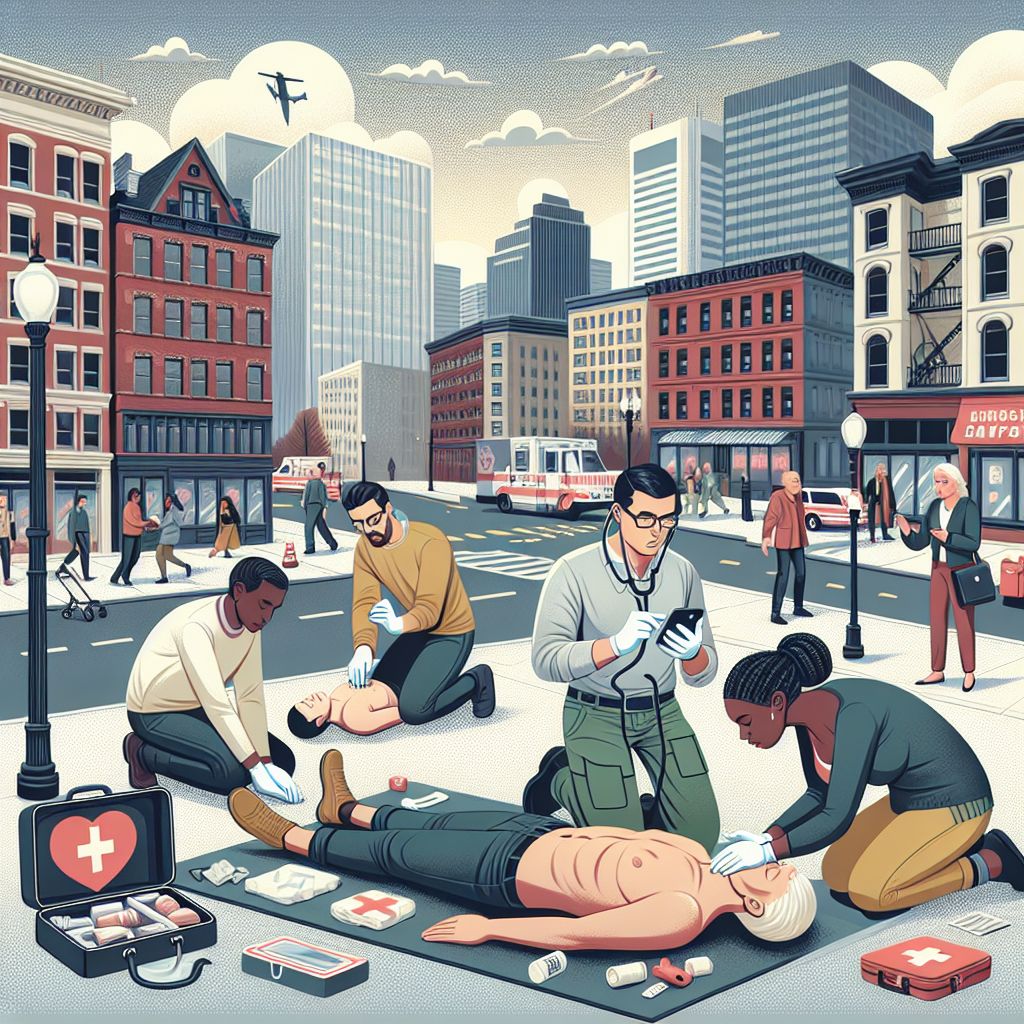
Urban First Aid: What to do while you wait for help
In an emergency, there may be a delay in receiving medical attention, or it may not be available at all. It’s important to know how to administer first aid in an urban environment to deal with common injuries and stabilize conditions until professional help arrives. This can make a big difference, especially when every second counts.
Building a First Aid Kit for Urban Environments
When putting together a first aid kit for urban survival, it’s important to think about the kinds of injuries you might sustain in a city. Some items you might want to include are:
-
Bandages and gauze in a variety of sizes for treating cuts and scrapes
-
Antiseptic wipes and ointments to help prevent infections
-
Pain relief medications such as ibuprofen or acetaminophen
-
Medical equipment like tweezers, scissors, and a tourniquet
Also, think about carrying a small urban first aid manual. This reference can guide you through procedures you may not know in an emergency.
Handling Typical City Wounds
When it comes to surviving in the city, you may come across injuries such as sprains due to rough sidewalks, cuts from shattered glass, or even breathing problems from smoke or pollution. Here’s how to handle these typical city wounds:
-
When dealing with sprains, use the RICE method: Rest, Ice, Compression, and Elevation.
-
Make sure to clean cuts properly to avoid infection, and apply pressure to stop any bleeding.
-
If the air quality is not good, use a mask or a makeshift filter such as a wet cloth over your mouth and nose.
Having a good understanding of these basic skills and acting fast can prevent further problems and potentially save lives.
Expert Packing: The City Survival Kit
A city survival kit is your emergency lifeline. It should have all you need to remain safe, healthy, and on the move for a minimum of 72 hours. This kit is not a fixed item; it should change with your daily routine, the time of year, and any specific dangers you may encounter.
Must-Have Items for Your City Survival Kit
Your city survival kit should be light, robust, and simple to transport. It should contain:
-
First aid kit
-
Multi-purpose tool
-
Light source and spare batteries
-
Emergency rations and water
-
Portable water purifier
-
Whistle and signal mirror
Every item is crucial, from being able to see in the dark to being able to signal for help if you’re stuck.
City Survival Compact Tools and Gadgets
In urban areas where space is limited, your survival tools should be compact and multi-functional. Smart choices include a hand-crank radio for information, a solar charger for your phone, and a collapsible water bottle for hydration.
Keep in mind, the most effective tool is the one you have on hand, so focus on items that are convenient to carry around on a daily basis.
Staying Ready: Know the Urban Crises
Urban crises can be anything from blackouts and terrorist threats to natural calamities like earthquakes and floods. Knowing the kinds of crises that might occur in your city is the first step towards staying ready.
Urban Emergencies and Their Implications
Different urban emergencies pose different problems. For instance:
-
Blackouts might make it impossible to use electronic payment systems and ATMs.
-
Nature’s fury can interrupt transportation and the delivery of goods.
-
Civil disturbances can create unforeseen hazards and require you to stay at home.
When you think about what could happen during different types of emergencies, you can make plans that will help you be more resilient.
Preparation and Knowledge Before a Disaster
Preparing before a disaster involves recognizing potential risks in your area and making a plan to respond. This includes understanding the best survival practices and being well-informed about the necessary steps to stay safe.
-
Being aware of evacuation routes and places to take shelter
-
Maintaining a plan for communication with loved ones
-
Staying updated on local emergency management resources
Furthermore, keeping an elevated level of awareness during high-risk times can help you stay ahead of the pack.

Keeping Up to Date: Information for City Survivalists
Being informed is key, especially when it comes to surviving in the city. Keeping up to date on the latest tips, new equipment, and city-specific resources can greatly enhance your readiness. For those interested in broadening their knowledge, the Best Survival Books of 2023 can be an excellent resource.
Top Urban Survival Books and Websites
For those interested in learning more about urban survival, there are many great resources available. Some of the best books and websites include the 2024 Best Urban Prepper Survival Guide & Strategy Books.
-
Richard Duarte’s “The Urban Survival Handbook”
-
SurvivalBlog.com for a multitude of helpful tips and reviews on survival gear
-
John “Lofty” Wiseman’s “SAS Urban Survival Handbook”
These sources provide comprehensive guidance on a range of topics, from how to secure your home to what should be in your everyday carry (EDC) kit.
“Education is cheaper than experience.” – Max Mayfield, ex-head of the National Hurricane Center
Also, make sure to visit Outdoor and Urban Survival Gear to find a hand-picked selection of survival essentials.
Urban Survival Classes and Courses
There’s no substitute for in-person training. A variety of groups offer courses on urban survival skills, ranging from simple first aid to advanced self-defense. These classes can give you the experience and confidence you need to deal with real-world scenarios.
Commonly Asked Questions
What are the fundamental skills required for surviving in the city?
The fundamental skills required for surviving in the city are being aware of your surroundings, knowing how to defend yourself, knowing basic first aid, being able to navigate, and being able to find food, water, and shelter.
How can I subtly get ready for a city emergency?
To subtly get ready for a city emergency, you can:
-
Always have a small survival kit in your bag or car
-
Teach yourself survival skills using books and the internet
-
Get into the habit of noting exit routes and resources wherever you are
What do you need in an urban survival kit?
An urban survival kit needs to have self-defense items, emergency food and water, a first aid kit, tools for getting in touch with others and signaling for help, and items for personal hygiene.
How can I acquire urban survival skills?
You can acquire urban survival skills by attending local classes, enrolling in online courses, participating in survival workshops, and by regularly practicing the skills.
Are there legal issues to consider when carrying self-defense weapons in cities?
Yes, the legal issues of carrying self-defense weapons can change depending on the location. Always make sure to review local laws and rules about owning and using items such as pepper spray, knives, and guns.
Equip yourself with the necessary knowledge, skills, and tools, and you’ll do more than just survive – you’ll flourish in the urban jungle. Urban survival isn’t about living in fear; it’s about being prepared to tackle any challenge that comes your way, confidently and competently.
For those interested in enhancing their survival skills for urban environments, it’s important to stay informed and prepared. Reading up on the subject can be incredibly beneficial. Consider exploring some of the best survival books of 2023 to deepen your knowledge and ensure you’re ready for any situation.
